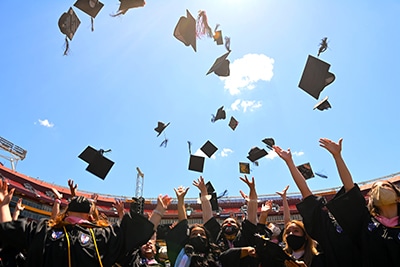In the forward to the 1988 edition of Henri de Lubac’s “Catholicism” (Ignatius Press, $24.95), then-Cardinal Joseph Ratzinger describes de Lubac as one who is not “clinging to a dead past” but “is in dialogue with what is said by our most modern contemporaries.” He hears what his contemporaries say “not as an outsider, but as one who is deeply sympathetic. Their questions are his own.” When de Lubac plunges into the deep treasures of the Catholic tradition, he does so “with the problems that we wrestle with in mind, and because he asks real questions, he finds real answers.” His work therefore holds the creative tension that resists sectarianism on the one side and secularism on the other. What he attempts is, in a word, a project that is truly Catholic.
Depending on the audience, what it means to be truly Catholic varies. To some, it would mean emphasizing one’s distinctiveness to the point of taking on a defiant, even hostile stance toward the dominant culture. To others, it would mean being so focused on the latest trends for the sake of engagement that the trends themselves become the markers of identity. While the first option runs toward sectarianism and the second scuttles toward secularism, the creative tension that Ratzinger observed in de Lubac presents a third option: to be firmly rooted in a living tradition, and from there engage critically and sympathetically with “our most modern contemporaries.”
Read more from our special college section here.
Amid a changing landscape in higher education, now is the time for Catholic colleges and universities to commit to that third way.
Proclaiming the ultimate good
As Pope St. John Paul II famously declared, the Catholic university is “born from the heart of the Church” (Ex Corde Ecclesiae, No. 1). The Church is the sign and the instrument, in Christ, of the communion of God and the unity of the human race (cf. Lumen gentium, No. 1). To come from the heart of the Church means to be a “living institutional witness to Christ and his message” (Ex Corde Ecclesiae, No. 49) — namely, that God so loves the world and that all are called into God’s communion.

This is the ultimate meaning that a Catholic institution of higher education heralds and seeks to understand. “It is,” in other words, “the honor and responsibility of a Catholic University to consecrate itself without reserve to the cause of truth. … Without in any way neglecting the acquisition of useful knowledge, a Catholic University is distinguished by its free search for the whole truth about nature, man and God. The present age is in urgent need of this kind of disinterested service, namely of proclaiming the meaning of truth, that fundamental value without which freedom, justice and human dignity are extinguished” (Ex Corde Ecclesiae, No. 4).
The Gospel is the fundamental value that secures, renews and enlivens the typically agreed upon values of freedom, justice and human dignity (though “human dignity” is less commonly accepted than the others). One would be hard pressed to find an institution of higher education that did not, in some way, claim to promote those typically agreed upon goods. They all seek to be a “force for good” in some sense or another.
What is distinctive about a Catholic institution of higher education is that it has “the honor and responsibility” of proclaiming what the ultimate good is, and then seeking that good in all things. This does not mean that Catholic institutions circle the wagons and congratulate themselves on this claim to truth; to the contrary, it means that the mission of a Catholic college or university begins from this claim. The mission is to serve the world, on behalf of the Church, in the manner appropriate to an institution of higher education — namely, through education, research and dialogue.
Catholic institutions of higher education should, as was said of de Lubac, “find real answers.” There are real problems in the world; pressing questions that need to be addressed; injustices that must be reckoned with and responded to. The duty of Catholic higher education is to listen to these questions and to care about those who ask them. Sometimes those questions come from intellectuals or governments trying to discover solutions to vexing problems, but oftentimes those questions come from the poor, the marginalized and the oppressed whose suffering cries out for redress. The way to find “real answers” is to listen sympathetically, to make the questions your own, and then to seek after understanding from the conviction and the hope that what Christ reveals as true of nature, man and God is indeed the ultimate truth.
Catholic institutions of higher education should be bold because of — and not in spite of — being born of the heart of the Church. That heart is shared with Christ, who ventures all in his Father’s love.
Becoming beacons of hope, healing
In an age where the value of a college education by traditional means is under scrutiny, why does a Catholic education matter? If it is primarily for credentialing or job training, there will be and already are more efficient and affordable means for reaching those ends. If it is for a “college experience,” then this will become more and more a luxury only the rich can afford.
A Catholic education matters only if students are given the opportunity to be formed as whole persons, toward the true and full meaning of human flourishing. This includes, of course, growing in academic and professional development, so as to be able to think deeply and critically, while also developing the skills and capacities that will enable them to contribute to civic life. But it also necessarily means a “formation in the moral and religious principles and teachings of the Church” (Ex Corde Ecclesiae, Article 4.5), by which students are taught to see what is truly good, why it is good and how to pursue that good. It is the responsibility of the Catholic institution to form its students in the “disciplined habits of mind, body, and spirit that characterize educated, skilled, and free human beings,” as well as the “disciplined sensibility to the poverty, injustice, and oppression that burdens the lives of so many,” (University of Notre Dame mission statement). This is an education aimed at forming young people who become capable bearers of the Gospel mission.

This kind of education does not happen by chance. Catholic institutions of higher education are only truly Catholic through a living commitment. It is the culture of the institution that is as much the curriculum as anything else. That culture comes, in part, from “maintain[ing] communion with the universal Church and the Holy See … [and] with the local Church and in particular with the diocesan Bishops of the region or nation in which it is located” (Ex Corde Ecclesiae, Article 5.1). It comes from being a Eucharistic community that is formed and informed by the gift of Christ in the Eucharist, who himself shares in burdens not his own and gives his own life for the good of the many. That kind of culture emerges from an active liturgical life, from an environment characterized by charity and respect, which also forsakes the enticements of unbridled busyness and productivity. As Charlie Camosy aptly summarized in America Magazine, “Catholic institutions of higher education must resist [the] distorted vision of the person … by giving our students genuine options to engage goods that do not fit into the dominant U.S. American marketplace: friendship, spirituality, liturgy, embodied community, enchantment, mentorship, daydreaming and more.”
The time is ripe for Catholic institutions of higher education to become beacons of hope and healing. The threats facing nature, humanity and the common good are legion. Suspicion and enmity run rampant. Material poverty is outpaced only by spiritual poverty. If Catholic institutions of higher education do not demonstrate their value now, there may not be a tomorrow for them. The well-endowed will perdure, but they will likely drift more and more into resembling their aspirational peers who threw off religious identity decades ago. Meanwhile the tuition-dependent institutions will continue to lose students, becoming unviable. What will be lost in the mix is the gift and mission of Catholic higher education as such, which extends the mission of the Church through scholarship, teaching and service.
Perhaps, then, the well-endowed have a responsibility to support Catholic higher education on the whole — building up the less secure institutions — while together Catholic colleges and universities develop a laser focus for Catholic identity and mission: committed to the Gospel of Jesus Christ, open to the needs of the many. By the tension of this twin discipline, the heart of the Church will stretch, through Catholic colleges and universities, to “our most modern contemporaries.”
Leonard J. DeLorenzo, Ph.D., works in the McGrath Institute for Church Life and teaches theology at the University of Notre Dame. Subscribe to his weekly newsletter, “Life, Sweetness, Hope,” at bit.ly/lifesweetnesshope.





